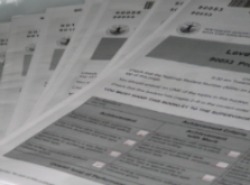 About 10% of papers published in English in medical and life science journals worldwide come from Japan. That’s good news for DMC Corp, a company that specializes in helping Japanese doctors and researchers gain international recognition.
About 10% of papers published in English in medical and life science journals worldwide come from Japan. That’s good news for DMC Corp, a company that specializes in helping Japanese doctors and researchers gain international recognition.
Established in 1995 by Australian Guy Harris, DMC has worked with clients ranging from individual researchers and clinicians to Japan’s top five pharmaceutical companies. DMC uses editors with specialist knowledge in a wide range of medical fields.
In addition to editing services, DMC has worked extensively in healthcare communications and telemedicine and provided training in medical communications to thousands of researchers.
GaijinPot, together with our sister site Japan Today, visits Harris at the DMC office in Azabudai to find out more.
How did you get started in this business?
I came to Japan in 1988 and started a language school with a friend. Then I started doing a lot of freelance editing Japanese pharma companies and private researchers. In late 1994, I organized an international conference on telemedicine. I established DMC in 1995 to continue all this work on a corporate basis. Now we primarily focus on editing for the medical community.
Was 2010 a good year for DMC?
It was a great year. We are growing because scientific publishing goes on, even in a recession. Health care, in general, is fairly steady and there are always papers that need to be edited and checked.
What are DMC’s strengths?
We offer a service that I don’t think our competitors offer. We approach editing in a different way. By that, I mean that we consider ourselves to be as much content editors as language editors. We’ve done thousands of papers and know what journals look for.
What areas do you deal in?
Medical and medical life sciences and biology-related research. If a Japanese author has done some research that they want published in the international literature, as a non-native speaker, they are at a disadvantage. So we help them by editing their papers. When you read a scientific paper, you read the content and you subconsciously form an opinion of the competence of the author, for better or worse. We aim to leave the reader with the sense that not only is the science good, but that the author is a competent researcher.
Generally, how good is the English of the original papers?
In 70% of cases, the authors are pretty good. A lot of them are MDs or PhDs, and have a reasonable language knowledge. And in some papers, there might only be the occasional “the” that has been misused but apart from that, it is perfect. That’s one end of the scale. At the other end, we get papers that look as if they have been passed through a translation machine – poorly written and poorly structured. In addition to improving the language, we often need to restructure a paper too, moving paragraphs around, adding text here and deleting text elsewhere. We have editors who have masters or doctorates in a particular field and they are in constant communication with the client.
We do some other interesting things within the publishing realm. One we call paper rescue, where we take a paper that has been rejected by different journals. If the science is no good, we can’t do anything. But if the science is good, then we can rescue it. We take it apart and go through it with the author, using our own experience and the information that we get from the rejecting journals. Getting a previously rejected paper accepted is very satisfying.
Since 1995, we have been the sole provider of editing services to a top five domestic pharmaceutical company. We also have many researchers and physicians, many at university hospitals. We do most of the work for one of the major departments at the National Cancer Center, for example. Then there are researchers at institutes like AIST (National Institute of Advanced Industrial Science and Technology), a purely research-focused institution.
Where are the papers of your clients published?
Worldwide, there are around 18,000 journals in medicine and life sciences. Most are monthly and each has to have a certain number of papers each month. About 10% of papers published in journals worldwide come from Japan. The top of the hill is Nature. If you get yourself published in Nature, that’s career-making.
How do you charge and what are your deadlines?
We look at the type of paper it is and charge based on that. We don’t count words. We’ll do any number of revisions until the client is satisfied. We have three levels of editing: brief check, standard check and standard plus check. Generally we ask for 5-7 days for the first check, then the author sends it back and we do our second check. That process can go on up to 10 times or more until both sides are satisfied.
How do you market your company?
Word of mouth is the best marketing tool, and accounts for more than 95% of our growth. Most clients are repeat clients. Some publish once or twice a month; others two or three times a year.
Who are your editors?
We outsource a lot to editors all over Japan. We’ve got PhDs, MDs, people with Masters degrees. They are all native speakers with a background in biosciences. Some work for a number of companies like ours, while others work just for us. Our standards are high, and we end up hiring fewer than 2% of the applicants who contact us. We conduct training courses for editors in-house and by iChat.
Find out more at DMC’s official site. Photo credit: Nzgabriel / Wikimedia



Comments
Great info, I’m getting a lot of ideas from this.
Thanks for sharing!